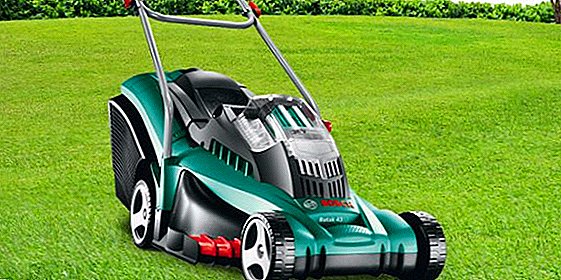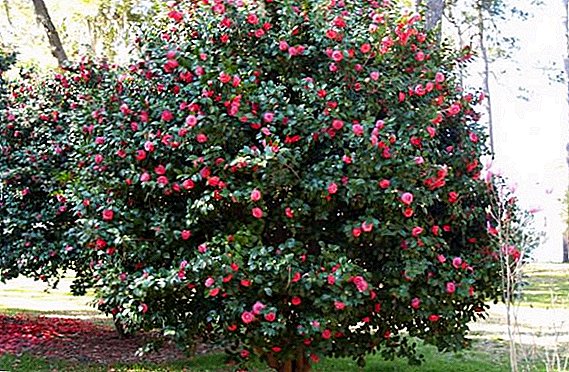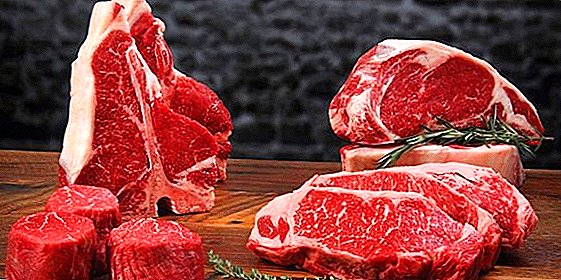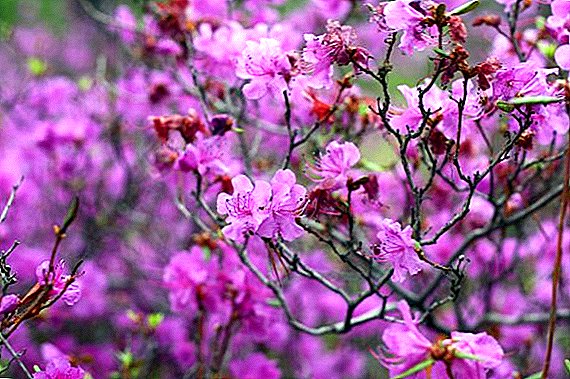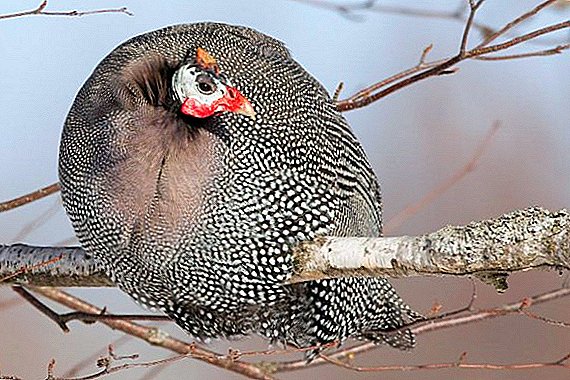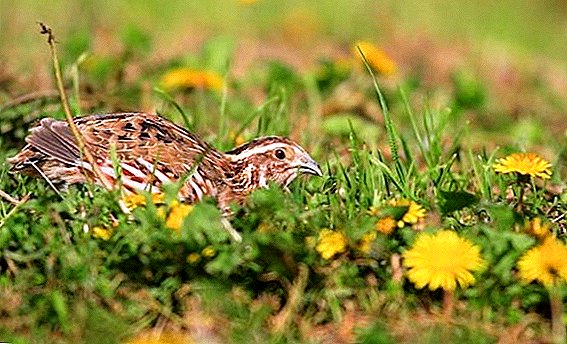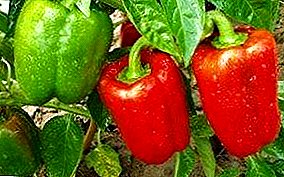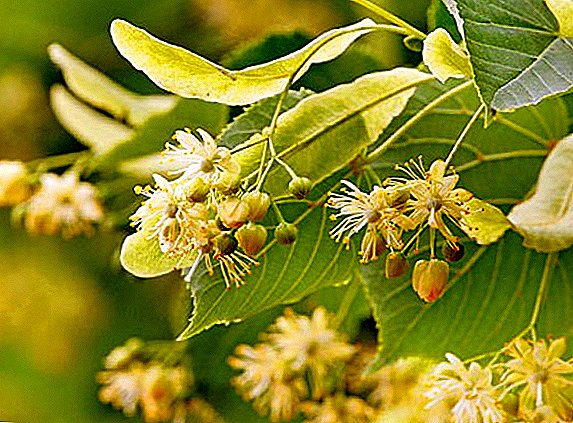 Not everyone knows ammonium nitrate, so let's take a closer look at this fertilizer, and also find out how and where it is used. Ammonium nitrate is a granular mineral fertilizer of white color with a gray, yellow or pink shade, with a diameter of up to four millimeters.
Not everyone knows ammonium nitrate, so let's take a closer look at this fertilizer, and also find out how and where it is used. Ammonium nitrate is a granular mineral fertilizer of white color with a gray, yellow or pink shade, with a diameter of up to four millimeters.
Ammonium nitrate description and composition of fertilizer
Fertilizer called "ammonium nitrate" - a fairly common option among summer residents, which has found wide application due to the presence in its composition of about 35% nitrogen, which is very necessary for the active growth of plants.
Nitrate is used as a growth regulator for green mass of the plant, for increasing the level of protein and gluten in cereals, as well as for increasing the yield. 
Did you know? In addition to the name "ammonium nitrate", there are others: "ammonium nitrate", "ammonium salt of nitric acid", "ammonium nitrate".
Ammonia and nitric acid are used for the manufacture of ammonium nitrate. Ammonium nitrate has the following composition: nitrogen (from 26 to 35%), sulfur (up to 14%), calcium, potassium, magnesium. The percentage of trace elements in nitrate depends on the type of fertilizer. The presence of sulfur in the agrochemical, contributes to its full and rapid absorption by the plant.
Types of ammonium nitrate
Pure ammonium nitrate is rarely used. Based on the geography of application and the needs of agrarians, this agrochemical is saturated with various additives, which means it is useful to know what exactly ammonium nitrate is.
There are several main types:
Simple ammonium nitrate - the firstborn of the agrochemical industry. Used to saturate plants with nitrogen. This is a highly effective starting feed for crops that are grown in the middle lane and may well replace urea.
 Ammonium nitrate brand B. There are two varieties: the first and second. It is used for primary feeding of seedlings, with a short duration of daylight, or for fertilizing flowers after winter. Most often, it is possible to buy it packaged in 1 kg in stores, because it is well preserved.
Ammonium nitrate brand B. There are two varieties: the first and second. It is used for primary feeding of seedlings, with a short duration of daylight, or for fertilizing flowers after winter. Most often, it is possible to buy it packaged in 1 kg in stores, because it is well preserved.
Potassium ammonium nitrate or Indian. Great for feeding fruit trees in early spring. It also sypyat in the ground before planting tomatoes, because the presence of potassium improves the taste of the tomato.
Ammonium nitrate. It is also called Norwegian. Available in two forms - simple and granular. It contains calcium, magnesium and potassium. Granules of this saltpeter are distinguished by good keeping quality.
Important! Calcium-ammonium nitrate granules are treated with fuel oil, which does not decompose in the ground for a long time, which will save it from pollution.This type of saltpeter fertilizes all plants, as it does not cause an increase in soil acidity. The advantages of using this agrochemical can be attributed to the easy digestibility of plants and explosion.
Magnesium nitrate. Since this type of ammonium nitrate does not burn the plants, it is used for foliar feeding. It is also used as an auxiliary battery of magnesium and photosynthesis in the cultivation of vegetables and beans. The use of magnesium nitrate on sandy and sandy sandy soils is highly effective.
 Calcium nitrate. Make both dry and liquid nitrate. Used for feeding vegetables and ornamental plants on sod-podzolic soils with high acidity. Calcium nitrate is used before digging up the site or under the root.
Calcium nitrate. Make both dry and liquid nitrate. Used for feeding vegetables and ornamental plants on sod-podzolic soils with high acidity. Calcium nitrate is used before digging up the site or under the root.
Sodium nitrate or Chilean holds up to 16% nitrogen. Ideal for the precipitate of all varieties of beets.
Porous ammonium nitrate is a fertilizer that, due to the special shape of the granules, has not been applied in the garden. It is explosive and is used for the production of explosives. It cannot be purchased privately.
Barium nitrate. Used to create pyrotechnic tricks, as it is capable of dyeing the flame green.
Did you know? Saltpetre is used not only as fertilizer, but also for the production of fetila, black powder, explosives, smoke bombs or paper impregnation.
How to apply ammonium nitrate in the garden (when and how to contribute, what can be fertilized and what cannot)
Saltpeter, as a fertilizer, has found wide application among gardeners and summer residents. In the process of plant growth, it is brought in before digging the beds and under the root. However, it is not enough to understand that ammonium nitrate can be used as a fertilizer, it is important to know what can be fertilized by it. Below we will talk about all the intricacies of using such substances in agriculture, because as you know, everything is fine, but in moderation.  To get maximum benefit from fertilizer, the rate of ammonium nitrate consumption should not exceed the consumption recommended by the manufacturer (calculated in grams per square meter):
To get maximum benefit from fertilizer, the rate of ammonium nitrate consumption should not exceed the consumption recommended by the manufacturer (calculated in grams per square meter):
- Vegetables 5-10 g, fertilized twice per season: the first time before budding, the second - after the formation of the fruit.
- The roots of 5-7 g (before making the feeding make recesses between the rows, a depth of about three centimeters and fall asleep in them fertilizer). Feeding is carried out once, twenty-one days after the emergence of sprouts.
- Fruit trees: young plantations require 30-50 g of a substance that is introduced in early spring, when the first leaves appear; fruit trees of 20-30 g, a week after flowering, with a repetition in a month. Crumble precipitate around the perimeter of the crown before watering. If you use a solution, then they need to pour trees three times a season.
Important! Divorced nitrate is more quickly absorbed by the plant. The solution is prepared as follows: 30 grams of nitrate is diluted with ten liters of water.
- Shrubs: 7-30 g (for young), 15-60 g - for fruiting.
- Strawberry: young - 5-7 g (in diluted form), giving birth - 10-15 g per linear meter.

Since 50% of the nitrogen in the nitrate is in the form of nitrate, it is well distributed in the soil. Therefore, it will be possible to get the maximum benefit from the fertilizer when it is introduced in the period of active growth of the crop with abundant irrigation.
The use of ammonium nitrate with potassium and phosphorus is considered more effective. On light soils, saltpeter is scattered before plowing or digging for planting.
Important! In order to avoid spontaneous combustion, nitrate is forbidden to be mixed with peat, straw, sawdust, superphosphate, lime, humus, chalk.Ammonium nitrate is scattered over the ground, before watering, and even in the dissolved form it is still necessary to pour it with water. If you apply organic fertilizer under trees and shrubs, then nitre is required a third less than organic matter. For young plantings, the dosage is reduced by half.

Ammonium nitrate as a fertilizer, in reasonable doses, can be used to feed almost any plant. However, it is important to know that it cannot fertilize cucumbers, pumpkins, zucchini and squash, as in this case the use of nitrate will be an aid to the accumulation of nitrates in these vegetables.
Did you know? In 1947, in the United States, 2,300 tons of ammonium nitrate exploded on a cargo vessel, and the shock wave from the explosion blew up two more flying planes. From the chain reaction, which caused the explosion of the aircraft, destroyed the nearby factories and another ship carrying saltpeter.
The advantages and disadvantages of using ammonium nitrate in the country
Ammonium nitrate due to its affordability and easy digestibility by plants has found wide application not only in the garden, but also in the country. The advantages of using nitrate on the site include:
- ease of use;
- simultaneous saturation of plants with all the useful substances that are required for their full development;
- easy solubility in water and damp ground;
- positive result even when introduced into the cold ground.

However, in addition to the advantages of using any fertilizer, there are disadvantages. Saltpeter is no exception:
- it is quickly washed away by precipitation into the lower layers of the soil and into the groundwater, or it migrates along the soil profile;
- distorts the structure of the soil;
- increases the acidity of the soil and salinizes it, which has an irreparable impact on productivity;
- it does not contain all the trace elements necessary for the plant, which entails additional expenses for their purchase.
Ammonium nitrate: how to properly store fertilizer
Using ammonium nitrate, you probably already know that in the instructions for use indicated its toxicity. Therefore, the capacity in which the fertilizer is stored must be airtight. Store saltpeter in well-ventilated, atmospheric rooms with low air humidity.
However, in addition to toxicity, nitrate is also highly flammable, which is why it is strictly forbidden to be combined with other fertilizers. In the first place it can not be mixed for storage with urea. If the substance was bought for quick use (within a month), street storage under a canopy is allowed.  In order for ammonium nitrate not to be caked, magnesia additives are added to it. It is possible to store nitrate for no more than six months, given that the main component of this agrochemical is nitrogen, improper storage will lead to its evaporation, as a result of which it will be necessary to increase the consumption rate of nitrate. Temperature jumps lead to the recrystallization of ammonium nitrate, as a result of which it becomes poorly soluble.
In order for ammonium nitrate not to be caked, magnesia additives are added to it. It is possible to store nitrate for no more than six months, given that the main component of this agrochemical is nitrogen, improper storage will lead to its evaporation, as a result of which it will be necessary to increase the consumption rate of nitrate. Temperature jumps lead to the recrystallization of ammonium nitrate, as a result of which it becomes poorly soluble.
Important! The dust of ammonium nitrate, falling on the skin and reacting with sweat or moisture, causes severe irritation.



